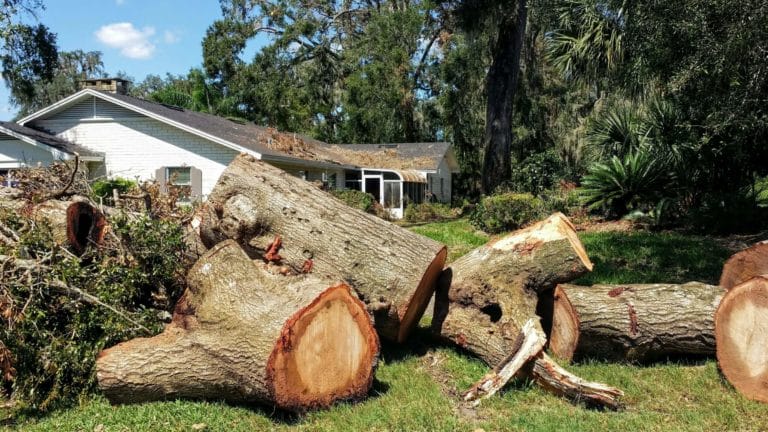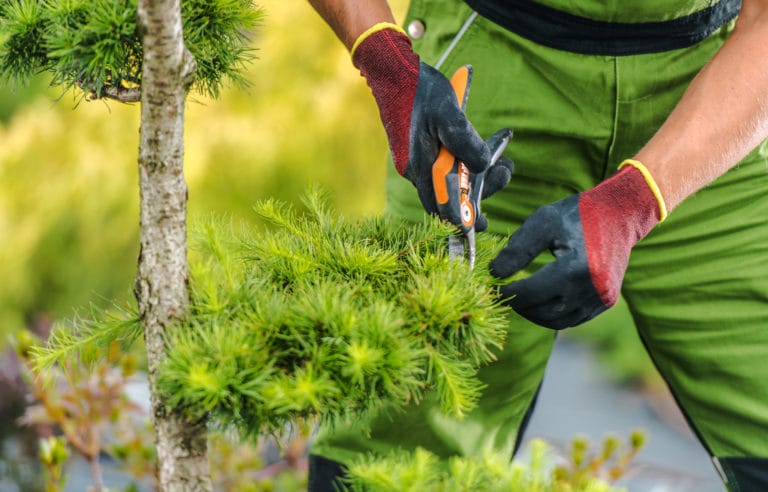Trees near power lines can threaten the electricity infrastructure and public safety. In the event of a storm or strong winds, branches or entire trees can fall onto power lines, causing extensive damage and leading to power outages. Moreover, the contact between trees and power lines can create a fire hazard, endangering nearby homes and businesses.
To mitigate these risks, it is essential to have a clear understanding of the responsibilities involved in tree-cutting near power lines. This blog post will explore the various stakeholders responsible for this task and shed light on the regulations and requirements that govern tree-cutting practices.
Regulations and Requirements
1. Government regulations on tree cutting near power lines
Government regulations ensure that tree-cutting near power lines is carried out safely and effectively. These regulations aim to protect public safety, maintain the electricity grid’s reliability, and promote environmental stewardship. Countries and regions have specific rules that outline the permissible distances between trees and power lines and the methods and tools used for tree cutting. These regulations often require utility companies and property owners to obtain permits or licenses before performing tree-cutting operations.
2. Responsibilities of utility companies
Utility companies have a significant responsibility for tree-cutting near power lines. As the owners and operators of the electricity infrastructure, it is their duty to ensure the reliability and safety of the power grid. This includes implementing a comprehensive tree trimming and maintenance program. Utility companies are responsible for regularly inspecting power lines for vegetation encroachments and taking necessary action to prevent them from interfering with the lines. They may employ trained arborists or contract with tree care specialists to carry out the tree-cutting operations following the regulations and requirements.
Utility Companies
1. Role and responsibilities of utility companies
Utility companies play a vital role in maintaining the integrity of power lines and ensuring uninterrupted electricity supply. Their responsibilities include: 1. Conducting regular inspections of power lines to identify trees or branches that pose a risk. 2. Developing and implementing a tree trimming and maintenance program to prevent vegetation interference with power lines. 3. Hiring qualified tree care specialists or arborists to carry out the tree-cutting operations in compliance with regulations and safety standards. 4. Collaborating with local authorities and property owners to address tree-cutting needs in the community.
2. Tree trimming and maintenance programs
Utility companies typically have dedicated tree trimming and maintenance programs to manage the vegetation near power lines effectively. These programs involve periodic inspections, risk assessments, and the development of appropriate tree-cutting strategies. The tree-trimming operations are carried out using specialized equipment and techniques to minimize the impact on the trees and surrounding environment. These programs often prioritize trimming trees that pose the most significant risk to power lines, such as those nearby or with heavy branches.
Local Authorities
1. Role of local authorities in tree cutting near power lines
Local authorities also manage trees near power lines. While utility companies and property owners primarily have responsibility for tree cutting, local authorities provide oversight and coordination to ensure compliance with regulations and address community concerns. Local authorities may have their own regulations and permits regarding tree-cutting near power lines that complement the government regulations. They work closely with utility companies and property owners to establish tree-cutting protocols, prioritize areas needing attention, and address any public safety concerns that may arise.
2. Collaboration between utility companies and local authorities
Collaboration between utility companies and local authorities is crucial for effective tree-cutting near power lines. By working together, they can ensure efficient vegetation management, prevent power outages, and address community concerns. This collaboration involves regular communication and coordination between utility companies and local authorities, sharing information about tree-cutting initiatives, identifying high-risk areas, and resolving any conflicts or challenges that may arise.
Property Owners
1. Responsibilities of property owners in tree maintenance
Property owners also have responsibilities regarding tree cutting near power lines, especially if the trees are on their private property. They must ensure that trees growing near power lines are properly maintained to minimize the risk of interference. Property owners should regularly inspect their trees for signs of potential hazards, such as overhanging branches or trees leaning toward power lines. If such hazards are identified, they should contact the utility company or a qualified tree care specialist to address the issue.
2. Importance of communication between property owners and utility companies
Maintaining open lines of communication between property owners and utility companies is essential for effective tree management near power lines. Property owners should promptly report any concerns regarding tree hazards to ensure timely intervention by the utility company. On the other hand, utility companies should actively engage with property owners, provide relevant information about tree-cutting initiatives, and educate property owners about their responsibilities in maintaining trees near power lines.
Public Awareness and Education
1. Importance of educating the public about tree cutting near power lines
Public awareness and education campaigns are crucial in promoting responsible tree-cutting practices near power lines. By raising awareness about the potential risks and providing information on the roles and responsibilities of different stakeholders, these campaigns can encourage proactive actions and prevent accidents. Educating the public about the importance of maintaining trees at a safe distance from power lines, recognizing potential hazards, and reporting them to the appropriate authorities can empower individuals to contribute to the overall safety and reliability of the electricity infrastructure.
2. Initiatives for public awareness on tree maintenance
Many utility companies and local authorities conduct public awareness initiatives to educate communities about tree maintenance near power lines. These initiatives may include distributing informational brochures, organizing workshops or community forums, and utilizing social media. By engaging directly with the public and providing accessible information, these initiatives can help dispel misconceptions, address common concerns, and foster a culture of proactive tree management.
Conclusion
In conclusion, the responsibility for cutting trees near power lines is shared among various stakeholders, including utility companies, local authorities, and property owners. Government regulations provide the framework for safe and responsible tree-cutting practices, while utility companies primarily manage vegetation near power lines. Collaboration between utility companies, local authorities, and property owners, facilitated by effective communication and public awareness, is essential for mitigating risks and ensuring the electricity grid’s reliability. These stakeholders can contribute to a safer and more efficient power system by working together.


